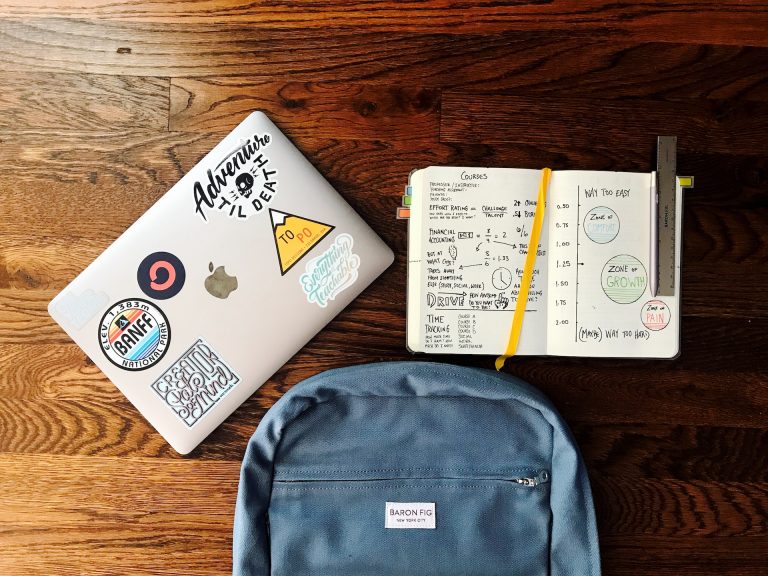Dual Delivery: Giving Remote and In-Person Students Equal Attention and Engagement
Traditional in-person attendance remains a time-tested method still used by most educational institutions today. However, in recent years, many institutions have embraced a newer, albeit less established, model in some programs: distance learning. This approach allows for fully remote courses or a hybrid combination of remote and in-person learning.
Instructors who feel confident engaging students within a physical classroom may find it challenging to adapt to a model that includes distance learning. A common difficulty instructors may face is finding ways to give remote and in-person students an equal measure of attention and engagement.
The following article provides insights into the benefits of distance learning along with strategies to tackle the responsibility of engaging all students equally—whether remote or in-person.
Why Use Distance Learning in Your Course?
Since institutions continue to move toward more flexible options for their students and instructors, it’s important to note the numerous advantages of remote or distance learning. The following are just a few examples of how distance learning provides several benefits for remote students that aren’t possible in traditional in-person classrooms:
1. Courses are available to students in a wider range of locations.
2. Remote learning saves on commuting and housing expenses typically required for in-person attendance.
3. Courses offer greater accessibility for students facing various physical or mental health challenges.
4. Courses offer greater accessibility for nontraditional students, such as parents, full-time workers, or frequent travelers.
5. Access to courses stays consistent for students who can maintain an internet connection but live in natural disaster areas or extreme climate conditions.
Nearly any course could be considered for distance learning with the appropriate adaptation. However, it’s important to note that hybrid courses do place a significant responsibility of learning on the student, and the course should, therefore, be adapted to provide the student with many opportunities and an environment both within and without the classroom to learn and discuss concepts.
What Is Dual Delivery or the HyFlex Model?
In some instances, instructors may prefer to offer sections that allow students to choose whether they’ll attend class in person or participate remotely from another location. Teaching students both in person and remotely is called dual delivery or a HyFlex model.
HyFlex models may be a popular option at institutions that have a strong residential student population but also have students enrolled and living in various other locations or who are, for whatever reason, unable to travel to participate in person.
Two Keys to Success in HyFlex Models
One factor that makes in-person attendance effective is the cultivation of support systems among classmates and between students and instructors. When incorporating HyFlex education into a course, instructors can follow this pattern of support by focusing on a couple of key strategies:
1. Facilitate active engagement between remote and in-person students during class time.
2. Ensure the attention and lessons given to students are consistent and equal, regardless of learning format.
Challenge #1: Engaging Students with One Another
Especially if the classroom is outfitted with less effective technology, instructors may find it hard to facilitate active engagement between remote and in-person students during class time.
Instructors should find ways to encourage remote students to participate in classroom discussions. Most video conferencing applications allow participants to post comments in a chat section or reactions. Assuming in-person students are unable to see or hear online students, if a question is posed to the class as a whole, instructors should be sure to read the comments and reactions of the online students to the entire class. It can also be helpful for all participants if instructors repeat the questions asked in class or online to ensure everyone has heard them. For this purpose, a small mic setup may be helpful.
Using Technology to Engage
For instructors able to provide more technology, they may find it helpful to set up their classrooms with wide-angle cameras so that remote students can see the classroom and whiteboard. Additionally, instructors may also find it helpful to project the video conferencing application on the board and use speakers for the application so in-person students can clearly hear and see the online participants and their comments or reactions. Again, a small mic may be helpful so the instructor can repeat the questions and comments of in-person students. This setup supports a more inclusive and interactive environment for all students.
Another solution for engaging students in communication is discussion forums. These are an excellent way for students in any format to work together outside of class time to answer a particular question. To make the most of these forums, instructors should encourage students to write on topics leading up to class discussion.
Challenge #2: Providing Equal Delivery of Content and Support
Regardless of whether students attend online or in person, they should receive and be assessed on the same learning outcomes.
Though students may access materials or complete assignments through different mediums, instructors should ensure students in both formats receive the same learning materials, such as worksheets, practice tests, study guides, and other assignments. If these learning activities are assigned a grade, all students should be graded on the same criteria, even if students are encouraged to work in groups but choose to work independently. Quizzes and exams should assess learning outcomes that all the students have worked on and material that all students have had the opportunity to review.
Giving Equal Attention in Office Hours
In preparing to submit assignments or to take an assessment, students should have the same access to the instructor or TA(s) for study assistance. One way some instructors approach this is by scheduling two separate times for office hours: one set time for in-person students to meet with the instructor face-to-face for help and one set time for remote students to meet with the instructor online for help. Another option could be to have different TAs assigned to assist specifically with each format under the oversight of the instructor.
In whichever teaching and meeting methods the instructor chooses, students in both formats should feel they are being equally supported by their instructor and engaged with their classmates. Following these keys to dual delivery will go a long way in giving remote and in-person students equal attention and engagement and helping them to feel successful.
Sources:
Ackley, J. (2021, October 21). Dual delivery student engagement: Strategies and examples. South Suburban College. https://tl.ssc.edu/dual-delivery-student-engagement-strategies-and-examples/
Caulfield, J. (2011). How to design and teach a hybrid course: Achieving student-centered learning through blended classroom, online, and experiential activities. Taylor & Francis. https://www.google.com/books/edition/How_to_Design_and_Teach_a_Hybrid_Course/UBDJEAAAQBAJ?hl=en&gbpv=1
Essa, E. K. (2023). The effectiveness of hybrid learning in enhancing academic mindfulness and deeper learning of university students. International Journal of Research in Education and Science (IJRES), 9(1), 188–202. https://doi.org/10.46328/ijres.3081
Johnson, A. (2023, March 6). How to ensure you are attending to in-person and remote students equally. McGraw Hill. https://www.mheducation.com/highered/blog/2024/06/how-to-ensure-you-are-attending-to-in-person-and-remote-students-equally.html
Scientia Education Academy. (2020, June). Preparing to deliver in dual mode. UNSW Sydney. https://www.education.unsw.edu.au/sites/default/files/documents/Dual%20mode%20POP.pdf
Yoshinobu, S. (2022, May 5). Dual delivery: Teaching in-person and online for equity and access for students with disabilities, marginalized students. The IBL Blog. https://theiblblog.blogspot.com/2022/05/dual-delivery-teaching-in-person-and.html






